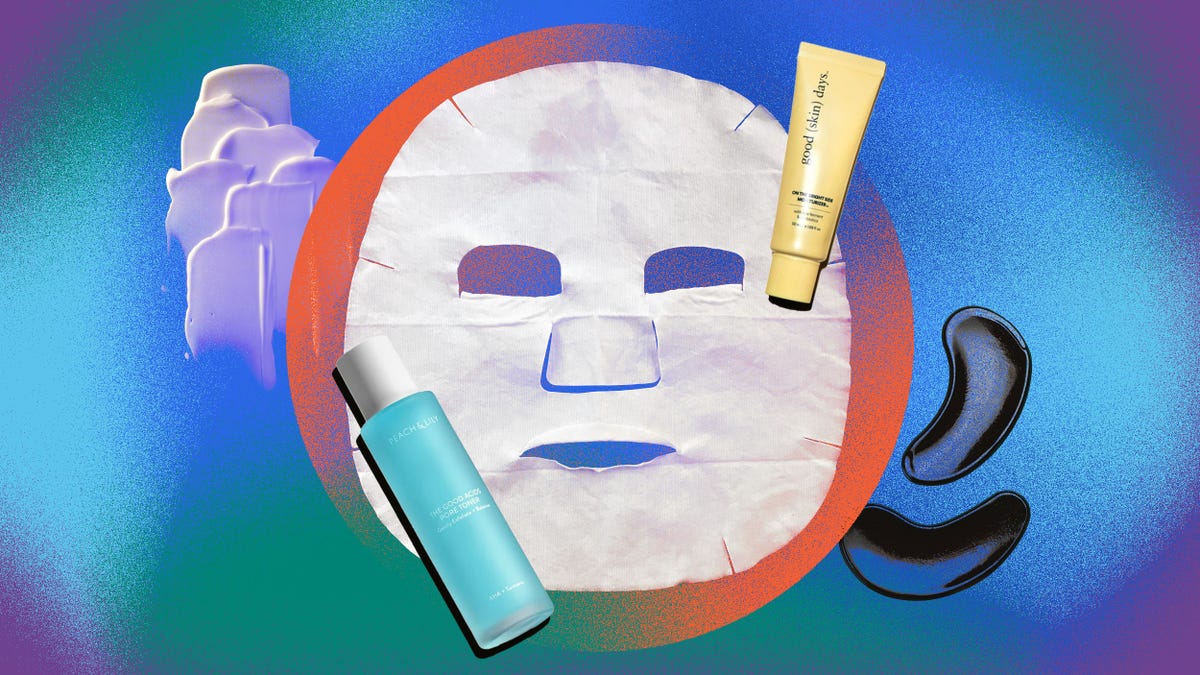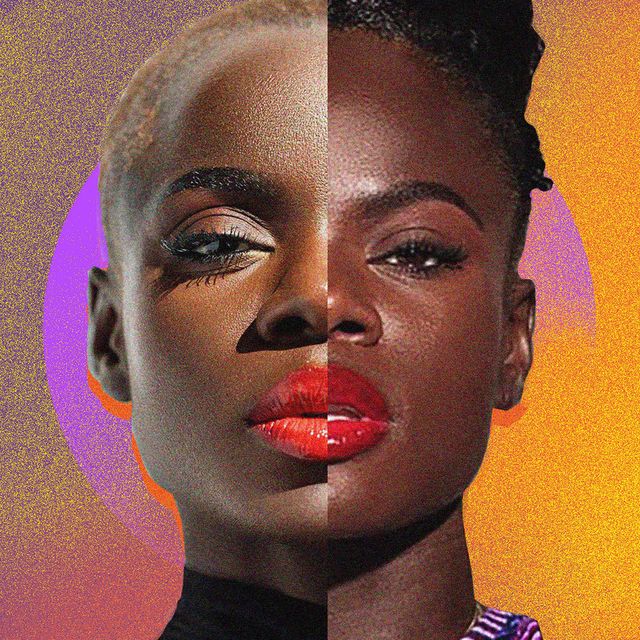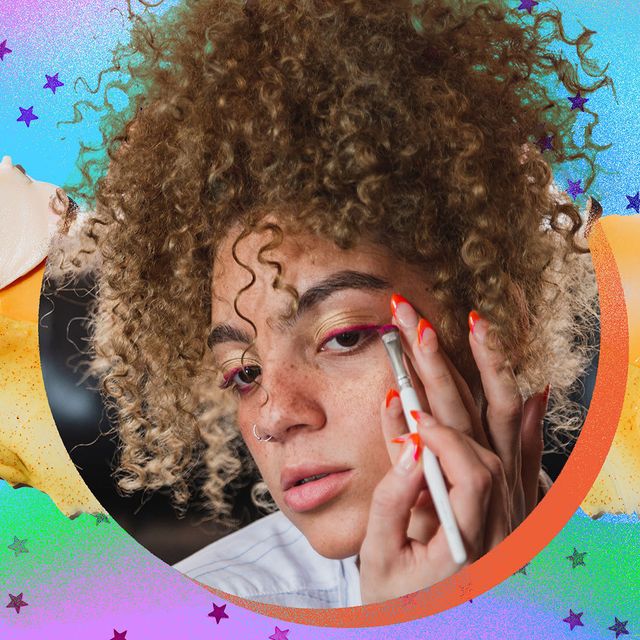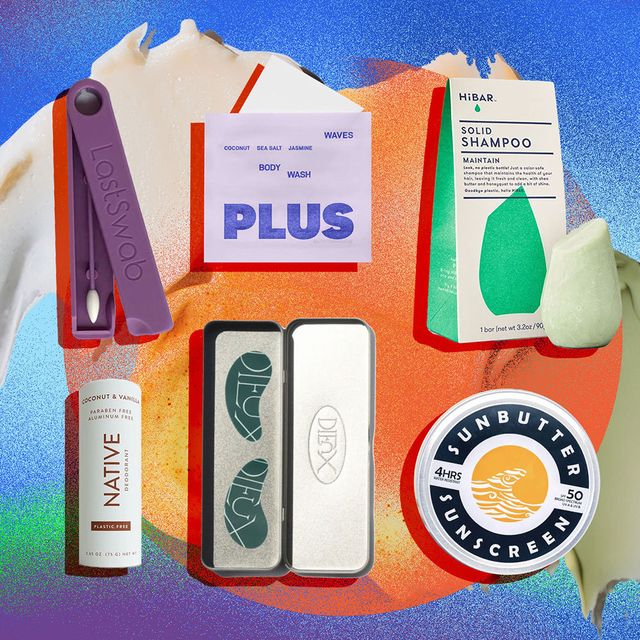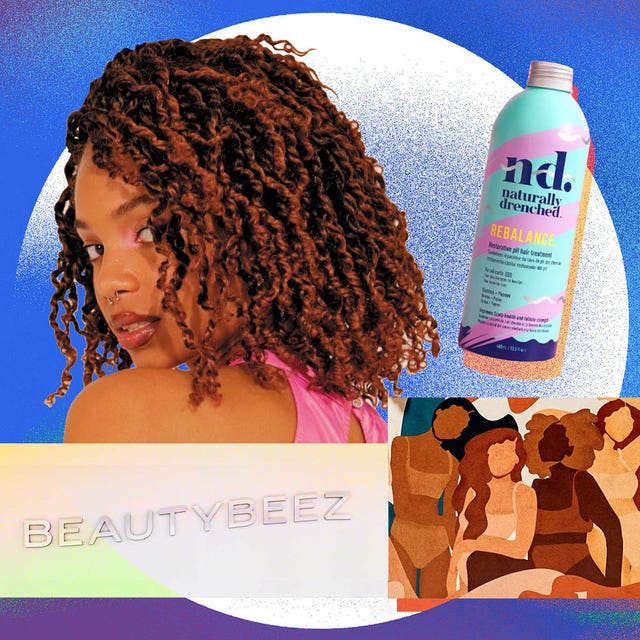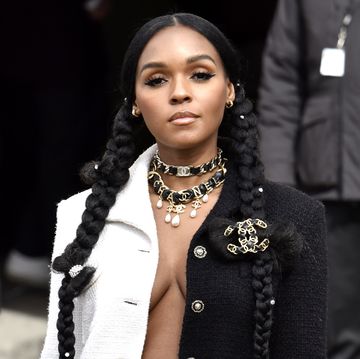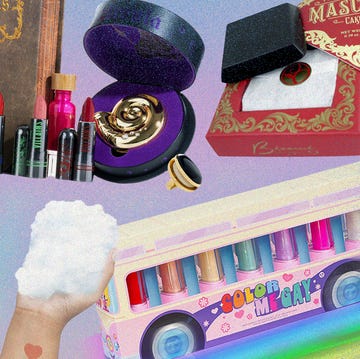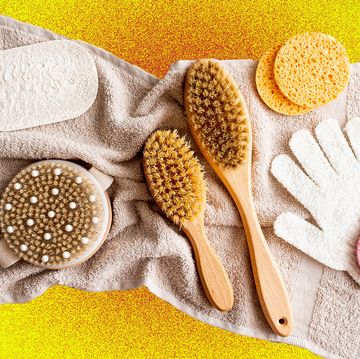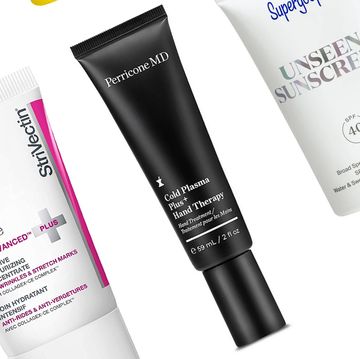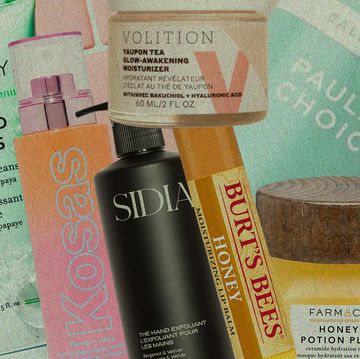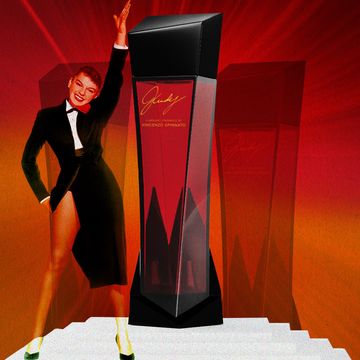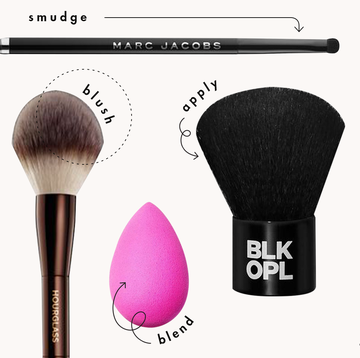We need beauty — it lifts our spirits, revitalizes our imaginations, and soothes us. Beauty, both internal and external, can be a healing force in our lives, so we’re bringing you a series of stories that examine the ever-changing role of beauty — in our personal lives and in society, and how this impacts us individually and collectively.
The growth of Korean beauty companies in the U.S. has revolutionized the U.S. beauty market, introducing many Asian beauty practices and philosophies, such as the 10-step cleansing and moisturizing routine and the preventive “skin first” wellness mindset to a new audience. The U.S. is now the third-largest market for exports from South Korean beauty companies, but this didn’t happen overnight.
To begin with, the Korean beauty business (aka K-Beauty) may be a misnomer.
“K-Beauty is not a trend,” Alicia Yoon, the founder and CEO of K-Beauty e-tailer Peach & Lily, says. “Not only has it existed for centuries in Korea, but it’s kind of a funny statement, like calling all American makeup companies ‘American Beauty.’ K-Beauty encompasses 10,000 companies with different stories, including derm brands, eco brands, fast whimsical brands, prestige brands, and more.”
More on Beauty
In 2011, K-Beauty entered the U.S. beauty market with the arrival of a premier Korean skincare brand called Dr. Jart+ at Sephora stores. Founded in 2004 by entrepreneur Lee Jin-wook, with assistance from dermatologist Dr. Jung Sung-jae, Dr. Jart+ purveys products that target dermatological issues like redness, dryness, and irritation. With its clean, medicinal branding, the line reflects the philosophy of “Doctor Joins Art,” a fusion of skincare, dermatological science, and art. In 2012, two major U.S. Korean-beauty retailers were established. Yoon started Peach & Lily, and Charlotte Cho cofounded Soko Glam.
Before starting Peach & Lily, Yoon launched a focus group of 100 people, including Asian-Americans and non-Asian-Americans. The CEO found that many Asian-Americans had mothers from Korea who used skincare products from Koreatown stores, but they only vaguely knew of BB creams (beauty-balm creams), a combination of moisturizer, sunscreen, and a very light foundation, and sheet masks — paper masks soaked in essence or ampoule that rest on the face to hydrate the skin. But none of these women had tried them.
Non-Asian-Americans, on the other hand, were entirely unfamiliar with these products. “K-Beauty as a term didn’t really exist. It was one big question mark for them, and I saw an opportunity to introduce this entire product category, this entire philosophy and modality of ingredients and product type from Korea to North America,” Yoon says.
Cho’s company faced similar unfamiliarity from U.S. consumers.
“When Soko Glam debuted in America in 2012, consumers and beauty editors alike were unfamiliar with K-Beauty,” the cofounder says. “During our first few years of business, we focused on not only educating our community about ingredients and best skincare practices but on the concepts and philosophies that K-Beauty is built on, like the Korean ‘skin first’ philosophy, double cleansing, and categories like pimple patches, snail mucin, and essences.”
Cho says that introducing these unfamiliar concepts was a struggle at first. “Skin first” places the focus on preventing skin problems like acne and uneven skin tone rather than heavily concealing symptoms that pop up later, while double cleansing is absolutely “necessary,” she says. The process involves a targeted two-step cleansing process of first using an oil-based cleanser to draw out sebum, SPF, and pollutants, and then a water-based cleanser to cleanse sweat and dirt.
But it’s not just Korean skincare processes or philosophies Americans were unfamiliar with; U.S. consumers are still acclimating to novel-to-them K-Beauty ingredients and products like lip masks and eye masks, which offer concentrated hydration and nutrition to solely those areas.
Since Cho says K-Beauty is often 10 years ahead of the West in terms of the sophistication of beauty, products now taken for granted in South Korea are still being mainstreamed in the U.S., including pimple patches — small spot acne treatments that come in hydrocolloid, medicated, and microneedle formats.
One ingredient that was a struggle to introduce to the States, despite the instant fascination with it? Snail mucin, an excretion from snails. Koreans aren’t turned off by using snail-mucin skincare, including serums and moisturizers, crediting it with the power to moisturize, repair skin damage, and add elasticity. And essences, watery though they are, aren’t intimidating to Koreans, who know to hand-apply them after double cleansing in order to hydrate dry skin and brighten and even skin tone while adding nutrition to delicate facial skin (an in-demand, well-priced essence that has given SK-II a run for its money, Missha Time Revolution incorporates fermented coenzyme, pearl reef extracts, and rice extracts).
Though K-Beauty products had long been available in mom-and-pop shops in Koreatowns and in Korean grocery stores across the country, the appearance of high-end Korean brands like Dr. Jart+ at Sephora, one of the biggest skincare and cosmetics retailers in the United States, was a fire starter. Self-explanatory, user-friendly, no-instructions-required BB creams and sheet masks quickly gained in popularity in the United States, followed by the 10-step beauty routine, a process during which a consumer sequentially applies these products in this order: oil cleansers, water cleansers, exfoliators, toners, essences, serums or ampoules, sheet masks, eye creams, moisturizers, and sun protection. The amount of time, and the level of thought necessary to implement the 10-step process in your daily beauty regime — as well as the shelf space — was a revelation to those who had simply been washing their face once and applying a daytime SPF moisturizer or a night cream.
Then came a tipping point in 2014, when Yoon introduced K-Beauty products at big-box retailers like Urban Outfitters, Target, Macy’s, and even QVC. “I went on air and introduced very specific, targeted products for QVC’s older audience, including an essence, eye masks, and a snail cream,” Yoon says. She says the products quickly became customer favorites on QVC. “They got a tremendous response because that demographic has a lot of word-of-mouth that produces huge results that you thought were not achievable.”
But age isn’t a determining factor for K-Beauty audiences, as both Yoon and Cho say their demographics span the country from coast to suburb, and teens to senior citizens. Studies also show a variety of racial representation (when compared to population percentages) in K-Beauty-consumer demographics. Certain products, Cho says, appeal more to certain demographics, like prestige Sulwhasoo creams for older populations, versus affordable $5 to $10 skincare products by the Ordinary and $1 or $2 sheet masks for the TikTok generation.
K-Beauty’s accessible price points for both everyday items and prestige products are part of its American appeal. “It’s all this really cool stuff that costs less than anything you’d buy in a drugstore,” Cho says. “You can get things that are concentrated and really good quality for road-shop prices, [products] that are really cute as well. I think all of that combined really affected and changed the industry. People said, ‘Why do I need to pay $300 when I can get it for much cheaper?’”
Pricing for a K-Beauty product can run a wide gamut. When younger consumers graduate from less-expensive products from the Face Shop, Innisfree, and Nature Republic (many of which can run from $5 to $15), there are still reasonable price points on a slightly higher echelon: $6 for the Too Cool for School Egg Cream Mask, which is a super-hydrating sheet mask; $13 for the Peach Slices Snail Rescue Blemish Busting Toner that alleviates pimples without stripping skin; $25 for the Shangpree Perfection Essence Emulsion 3-in-1, which does triple duty as a toner, essence, and emulsion; and $28 for the Benton Snail Bee Ultimate Hydrogel Eye Patch that leaves your under-eye area moist and baby soft.
As Yoon launched the Korean-beauty section at Sephora and CVS, she found retailers cooperating with her not just to add the products, but also to increase education about the products and why they are effective through in-store events like a Peach & Lily mask bar.
“Retailers really got behind not just the category of Korean beauty, but [also] education as to what is an essence, what is a sheet mask, what is this new ingredient,” Yoon says. “They were very excited.” Sephora placed Peach & Lily products on its home page, and on one occasion presented a live chat box with Yoon so people could ask questions about the products. Yoon soon found Peach & Lily’s website traffic increasing, with her site providing content and education beyond sales.
Then, in early 2014, K-Beauty reached another tipping point — this one a PR success. Beauty writer Katie Jayne Becker accompanied Yoon on a trip to South Korea for W magazine to write about the Korean beauty industry. Her two-page spread, called “Seoul Searching,” showed her walking Seoul’s cosmetics- and skincare-obsessed streets to visit shops with Yoon and even touring K-Beauty giant Amorepacific’s headquarters to find out how one of Korea’s most popular skincare brands was formulated.
“From there, it was incredible to see so many emails every day from so many different media outlets wanting to share and talk about K-Beauty,” Yoon says. “In 2012, it was constant evangelism, with us going to editors doing pitches and getting some in-box inquiries, but a lot of going out there and hustling. Trendspotters had now seen us, and it really just spiked.”
From 2016 to 2018, K-Beauty grew in the U.S. market by nearly 300 percent. “In 2018, K-Beauty really took off,” Cho says. Widespread awareness of the 10-step skincare routine followed, along with a fondness for new-to-America products like ampoules, which are essentially super-potent serums with higher concentrations — sometimes 50 percent or more — of key active ingredients meant to be dispensed in small quantities from dropper bottles. Then came widespread adulation by makeup artists and everyday women of the famous “glass skin,” a bright, super-glossy highlighted look akin to the bounce of light off a pane of glass, along with supplementary trends like “dumpling skin” (dewy, supple, and moist rather than reflective) and “honey skin” (plumper and more poreless than reflective, and only semi-glossy).
It’s now not uncommon to see at least one or two K-Beauty products on an American’s beauty shelf, even if the purchaser doesn’t subscribe to the full 10-step routine. In some cases, the consumer may not even know from the packaging that the product is Korean. This is especially true of brands that use simple, English-only product packaging, like Dr. Jart+.
But many American K-Beauty fans are consciously emulating Korean beauty standards — especially younger generations who closely follow Korean pop culture. The success of K-dramas and K-pop has catapulted into stardom Korean beauty products portrayed on shows and worn by pop stars.
“The Korean government did a great job supporting the K-pop and Korean dramas, which became huge and mainstream,” Cho says. “The [product] placements in K-dramas are not subtle, and when you see an actress using a product and putting it on their skin, that product sells out subsequently, and you can’t even get a hold of it. There is definitely a correlation.”
And the powerful commercial tides of Hallyu, the Korean pop-culture wave, won’t settle any time soon, Cho says. “Korean culture is here to stay. Viewers and listeners of Korean pop and Korean dramas want to achieve the looks of Korean stars — including their makeup and their skin. The skin-first philosophy is practiced by idols and actors alike.”
Truly understanding the deep philosophies of Korean beauty has required a paradigm shift focused on wellness and Eastern medicine, Yoon says. She stresses that, for Koreans, holistic health is the most important factor when it comes to skincare, not pop idolatry.
“Skincare is seen as this essential part of taking care of yourself that your parents teach you, like brushing your teeth, not as this whole separate category that’s a vanity thing or like [putting] a pretty ribbon in your hair. In the States, we talk about health and working out, but skincare is seen as this extra-credit thing you do rather than tackling symptoms holistically. While doing my multi-step routine in college and recommending products to friends, I definitely got some comments like, ‘Oh, I wouldn’t do that; I’m not a high-maintenance person.’ This is your skin, and in Korea my friends would trade notes about which moisturizer was more hydrating, which had what ingredients, and literally go shopping for skincare together,” Yoon says.
Cho agrees that K-Beauty has taken time for Americans to understand. “K-Beauty is not a quick fix; it’s an investment. Everything is very gentle. Over here, we’re so focused on one thing that will produce instantaneous results, and usually that’s way too harsh for our skin. The whole beauty ritual is grounded in Asian cultural practices.”
Those Asian cultural practices Cho credits include Chinese and Korean traditional medicine. “Specific herbs that are used in hanyak have been tested for centuries, both in ingestible and topical formats,” Yoon says. “The skin is seen as not only its own organ but as integrated with the whole body. Goldthread, which is used in hanyak as a fever reducer, can help quell and soothe skin topically.”
Cho is also a fan of Korean and Chinese medicinal ingredients. “They may not have all the Western scientific studies behind them, but you know when something’s working. The focus is on prevention, not cure, so if something is happening, it’s like, ‘What have you been eating? What have you been doing?’ There’s this whole concept of heat that doesn’t translate. The skincare products have ingredients that address that.” Cho appreciates Missha’s fermented ingredients and notes that many Western products in the past few years contained popular Eastern adaptogens. “I do think the West is embracing natural, clean medicinal beauty.”
Lest you think that K-Beauty creators will ever run out of new products to pump out, worry not — K-Beauty will keep evolving. You may remember the great sheet-mask selfie that took social media by storm several years ago. The hot new trend, Cho says, is rubber masks, which are a super-effective, rubbery barrier, non-reverse osmosis occlusive mask that solidifies on your face due to marine-algae ingredients. Korean hair-care products are also seeing increased interest, including hair masks and hair serums. And then there’s the cutting edge: of-the-moment home devices manufactured by K-Beauty companies like pricey LED masks. The most popular of these, the Cellreturn, has even had a star turn on the popular SBS and Netflix K-drama The King: Eternal Monarch, where both male and female characters sport the large, helmet-like masks during their beauty regimens.
“Home devices like LED masks, red-light masks, and new microcurrent face devices have really taken off and are huge in a way that they never were before,” Cho says. “People have time to mask because they’re working from home and treating themselves to relaxation and a little skin upgrade.”
Cho and Yoon are more excited about new products that put the technology in the bottle. Cho says we’re witnessing the Korean pivot toward acids in skincare, including AHAs and BHAs, but these products are still formulated gently and designed to hydrate and soothe, like her line Then I Met You’s Rosé Resurfacing Facial Mask. Yoon admires the development of high-tech-targeted innovations the Meso Ampoule, an ampoule that targets deep scarring with its hydrolyzed sponges providing a microneedle-like tingling experience that “really works.” Yoon also admires transformative two-in-one innovations like the Miwaji Hyalu Serum Veil, which hydrates with its serum, but, after being applied several times, begins to work as a veil, or a sleeping mask, which you wash off after you wake up.
The American-Korean beauty love affair goes both ways. Korean brands are making continual investments in the U.S. market, according to Yoon, learning how to “really resonate with consumers here.” Meanwhile, U.S. big-box retailers like Ulta and Sephora are going to South Korea to formulate their products, so you may already be using K-Beauty without even knowing it.
“K-Beauty shows up in more ways than people realize,” Yoon says. “I’ve been doing this for nine years, and K-Beauty is not going anywhere — it’s really entrenched in our society as a hotbed for innovation and a global mecca for beauty.”
Of course, many K-Beauty consumers covet seemingly flawless skin like that of Rosé of the band BLACKPINK, but Yoon says that education around K-Beauty is teaching its American consumers that wellness is the ultimate goal for their skincare journey.
“Korean beauty is not about having perfect skin, no matter what that means; it’s not about unrealistic skincare goals but about achieving your healthiest skin, and that’s something aspirational for everybody,” Yoon says. “It becomes less about being frivolous and more about taking care of yourself.”
Dakota Kim is a writer and editor living in Los Angeles. Her work has appeared in the Los Angeles Times, The New York Times, Food & Wine, Travel + Leisure, Civil Eats, Food52, and many other publications.
Get Shondaland directly in your inbox: SUBSCRIBE TODAY
